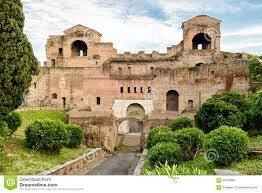1215 AD: Why the Fourth Lateran Council Was More Important than the Magna Carta
Episode 5 What Inspired the Fourth Lateran Council
1215: Years That Changed History
Dr Dorsey Armstrong (2019)
Film Review
In this lecture Armstrong makes the case that the 1215 Lateran Council, owing to the pervasive control the Roman Catholic Church had over medieval life, had far more impact than the Magna Carta on the lives of ordinary Europeans. In her view, this relates largely to its role in heralding a new “persecutory” society, ie one in which lepers, women, Jews and Muslims had fewer rights than healthy Christian men. She blames this sociological change on a population boom (triggered initially by a warming climate and greater agricultural productivity) and greater competition for land.
The Lateran Councils were ecumenical gatherings (ie representing all Catholic countries) called by the Vatican to resolve questions of church doctrine. There have been 21 ecumenical councils in all. The last was Vatican 2 (1962-65).
The 325 AD First Council of Nicaea [1] (attended by 1800+ bishops and clerics) was the first ecumenical Council, convened by the Roman emperor Constantine the Great.[2] Its alleged purpose was to resolve the dispute which had arisen in the Church of Alexandria over the true nature of Jesus.
This first council dismissed Arianism (the belief that Jesus wasn’t eternal like God the father, but was created by him and Adoptionism (the belief He was born human and God adopted Him making Him divine) as heresies. The First Council of Nicaea also set out the Nicene Creed (a set of compulsory beliefs for all Christians), devised a method for calculating Easter, banned self-castration, usury and kneeling for prayers (in favor of standing) during Pentecost.
The so-called Lateran Councils were ecumenical councils that took place in the Lateran Palace in Rome.
Lateran 1 (1123) – consolidated doctrine in the western church following the 1054 Great Schism between the Roman Catholic and the Eastern Orthodox church. This council also made decrees about the Pope having sole authority to appoint bishops, the celibacy of priests and the ban on blood relatives marrying.Lateran 2 (1139) – proclaimed Innocent II (in preference to his rival Anacletus II) the true pope.Lateran 3 (1159) – confirmed Alexander III pope (in preference to three “antipopes”), declared Catharism [3] a heresy, prohibited priests from charging fees for blessing marriages and banned Jews and Muslims from hiring Christians as servants.Lateran 4 (1215) – the second and most impactful council (after the First Council of Nicaea), made declarations regarding transubstantiation,[4] the conduct of the Crusades and the treatment of Jews, Muslims, women and Cathars.[1] In modern day Turkey.
[2] It’s believed Constantine called the First Council of Nicaea for political reasons, to increase stability in Rome’s rapidly disintegrating empire. Although he decriminalized Christianity in 313, he was only formally baptized on his deathbed in 327.
[3] The Cathars were a gnostic movement that flourished in southern Europe between the 12th and 14th century. Gnosticism is the belief that all human beings contain a divine spark (a piece of God) within themselves.
[4] According to Roman Catholic and Eastern Orthodox dogma, transubstantiation is a process in which communion bread and wine become the actual body and blood of Christ.
Film can be viewed free with a library card on Kanopy.
The Most Revolutionary Act
- Stuart Jeanne Bramhall's profile
- 11 followers




